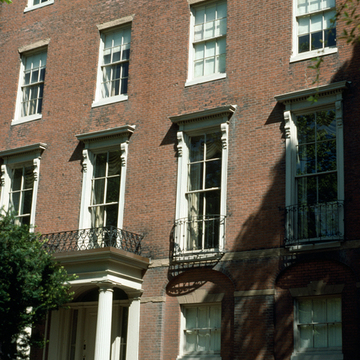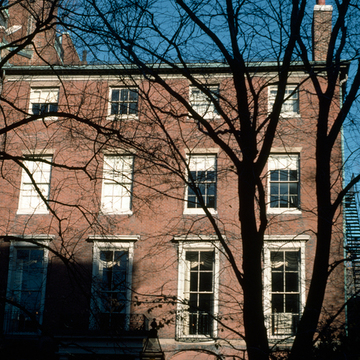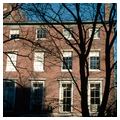In 1804, Charles Bulfinch purchased land from Jonathan Mason just west of the house he had designed for Harrison Gray Otis on Mount Vernon Street (BH22). Bulfinch planned these mirror-image houses as his residence and a rental property. Financial reverses forced him to sell number 87 to Stephen Higginson Jr., a Boston banker, and number 89 to David Humphreys, a Connecticut mill owner. Similar in size and with comparable stables and outbuildings, each unit cost approximately $18,700. The Humphreys House has been altered (most recently in the mid-1920s to Colonial Revival designs by William Dinsmore), but the Higginson House remains surprisingly intact as the home of the Colonial Society of Massachusetts. For both, Bulfinch used a four-story, four-bay format, with the entrance in the third bay. An example from Bulfinch's most productive period, the Higginson House interiors, especially the surviving double parlors on the second level, required the contributions of Daniel Raynerd as an ornamental plaster maker and Simeon
You are here
Higginson and Humphreys Houses
1804–1806, Charles Bulfinch; 1925, William Dinsmore. 87–89 Mount Vernon St.
If SAH Archipedia has been useful to you, please consider supporting it.
SAH Archipedia tells the story of the United States through its buildings, landscapes, and cities. This freely available resource empowers the public with authoritative knowledge that deepens their understanding and appreciation of the built environment. But the Society of Architectural Historians, which created SAH Archipedia with University of Virginia Press, needs your support to maintain the high-caliber research, writing, photography, cartography, editing, design, and programming that make SAH Archipedia a trusted online resource available to all who value the history of place, heritage tourism, and learning.


















